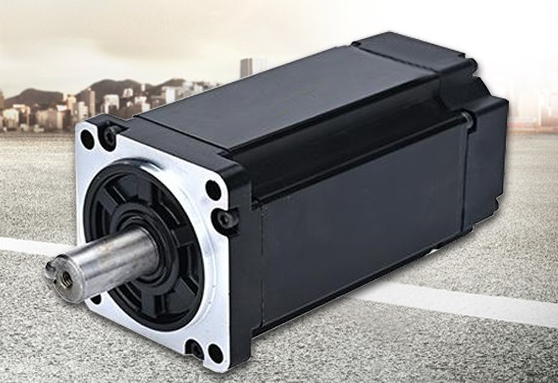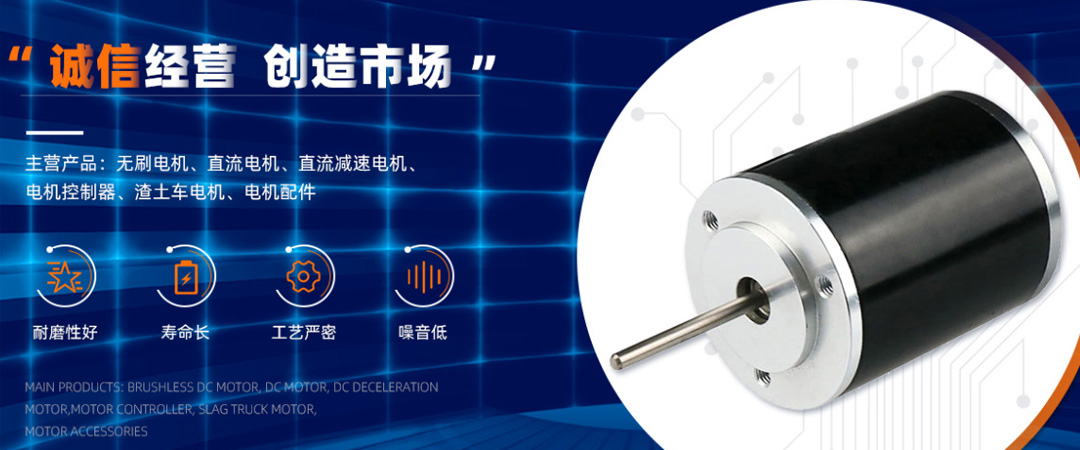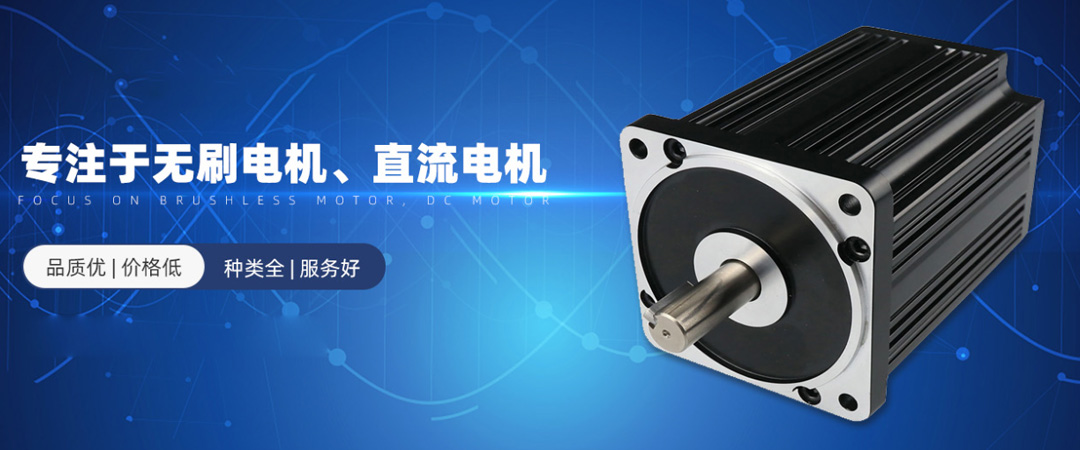The advantages of brushless DC motors in industrial applications
In recent years, brushless DC motors have become increasingly popular in industrial applications due to their numerous advantages compared to brushed DC motors. DC brushless motor manufacturers typically manufacture motors for applications such as electronics, medical, computer, and automotive. In the industrial engineering industry, brushless DC motors are often used in automation and manufacturing engineering applications to improve overall productivity and quality.
Due to their ability to generate high torque with good speed response, brushless DC motors can be used in applications that require variable speed, such as pumps and fans. The motor achieves variable speed response by operating in an electromechanical system with rotor position feedback sensors and electronic motor controllers. Therefore, it is very suitable for applications with constant torque loads, such as cranes, extruders, and conveyor belts. It is common for applications to stop during loading, but brushless DC motors generate high torque throughout their entire speed range.
Moreover, due to its low cost and wide range of applications, motors are commonly used as extruder drivers. They work by rotating the screw that compresses the polymer material. Although the motor appears to have precision in its movements, it avoids changes in the density of certain parts to ensure accuracy. By the way, the motor provides high torque within its speed range with almost no short-term position error.
Besides lacking electric brushes, brushless DC motors also lack mechanical commutators. The reduction in the number of components means that there are fewer parts that are worn, damaged, require replacement, or maintenance. Brushless DC motor manufacturers design motors that are more reliable and durable. Individual customers' customized DC brushless motors even have a service life of 30000 hours or longer. Due to the enclosed internal components of the motor, they operate with less noise and electromagnetic interference. The enclosed design also makes the motor suitable for environments with grease, oil, dirt, dust, and other debris.
In industrial applications, DC brushless motors are commonly used for variable speed, servo, drive, and positioning applications that are crucial for stable operation and accurate motion control. Its common uses in industrial engineering are linear motors, servo motors, actuators for industrial robots, extruder drive motors, and feed drives for CNC machine tools.
Linear motors generate linear motion without a transmission system, making them more responsive and accurate. Servo motors are used for precision motor control, positioning, or mechanical displacement. Due to the use of a closed-loop system in servo motors with brushless motors, their operation is strictly controlled and stable. Servo motors have the advantages of high reliability, controllability, dynamic response, and smooth torque generation, even when the motor load changes. The DC brushless servo motor has a stator, magnetic teeth, and an actuator with coil windings and permanent magnets.
In industrial robots, it can serve as an actuator to move mechanical joints and position tools in welding, painting, and assembly applications. Due to its reliability, power density, compact size, and ease of maintenance, it has become the top choice for robot applications.
The machine tool uses feed and spindle drive. The feed driver is used as a shaft drive motor. The spindle drive provides power and motion for milling, grinding, and drilling operations. You usually find DC brushless servo motors with electronic controllers in feed drives because they have high efficiency, good heat dissipation performance, and low rotor inertia.
The above is about the advantages of brushless DC motors in industrial applications. After reading this article, I believe everyone has gained a better understanding of brushless DC motors. I hope you can choose the equipment that suits you as soon as possible. If you have any other questions, please feel free to contact us at any time.
Due to their ability to generate high torque with good speed response, brushless DC motors can be used in applications that require variable speed, such as pumps and fans. The motor achieves variable speed response by operating in an electromechanical system with rotor position feedback sensors and electronic motor controllers. Therefore, it is very suitable for applications with constant torque loads, such as cranes, extruders, and conveyor belts. It is common for applications to stop during loading, but brushless DC motors generate high torque throughout their entire speed range.
Moreover, due to its low cost and wide range of applications, motors are commonly used as extruder drivers. They work by rotating the screw that compresses the polymer material. Although the motor appears to have precision in its movements, it avoids changes in the density of certain parts to ensure accuracy. By the way, the motor provides high torque within its speed range with almost no short-term position error.
Besides lacking electric brushes, brushless DC motors also lack mechanical commutators. The reduction in the number of components means that there are fewer parts that are worn, damaged, require replacement, or maintenance. Brushless DC motor manufacturers design motors that are more reliable and durable. Individual customers' customized DC brushless motors even have a service life of 30000 hours or longer. Due to the enclosed internal components of the motor, they operate with less noise and electromagnetic interference. The enclosed design also makes the motor suitable for environments with grease, oil, dirt, dust, and other debris.
In industrial applications, DC brushless motors are commonly used for variable speed, servo, drive, and positioning applications that are crucial for stable operation and accurate motion control. Its common uses in industrial engineering are linear motors, servo motors, actuators for industrial robots, extruder drive motors, and feed drives for CNC machine tools.
Linear motors generate linear motion without a transmission system, making them more responsive and accurate. Servo motors are used for precision motor control, positioning, or mechanical displacement. Due to the use of a closed-loop system in servo motors with brushless motors, their operation is strictly controlled and stable. Servo motors have the advantages of high reliability, controllability, dynamic response, and smooth torque generation, even when the motor load changes. The DC brushless servo motor has a stator, magnetic teeth, and an actuator with coil windings and permanent magnets.
In industrial robots, it can serve as an actuator to move mechanical joints and position tools in welding, painting, and assembly applications. Due to its reliability, power density, compact size, and ease of maintenance, it has become the top choice for robot applications.
The machine tool uses feed and spindle drive. The feed driver is used as a shaft drive motor. The spindle drive provides power and motion for milling, grinding, and drilling operations. You usually find DC brushless servo motors with electronic controllers in feed drives because they have high efficiency, good heat dissipation performance, and low rotor inertia.
The above is about the advantages of brushless DC motors in industrial applications. After reading this article, I believe everyone has gained a better understanding of brushless DC motors. I hope you can choose the equipment that suits you as soon as possible. If you have any other questions, please feel free to contact us at any time.




